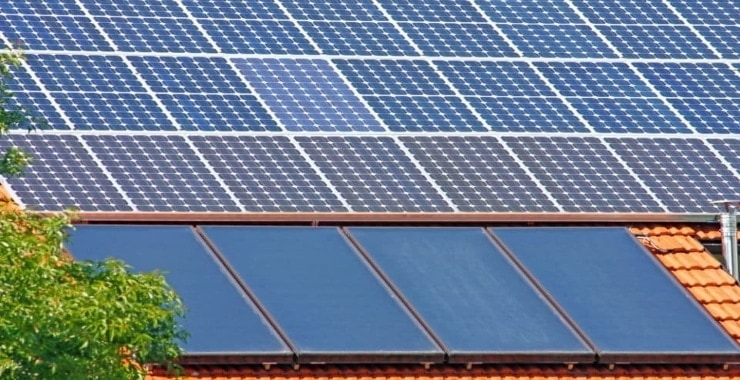Solar panels can be classified based on their structure, which refers to the materials and technologies used in their construction.
- Monocrystalline Solar Panels:
- Monocrystalline solar panels are made from a single crystal structure. They are known for their high efficiency and sleek black appearance. The manufacturing process involves slicing a single crystal ingot into wafers. Monocrystalline panels are space-efficient and offer good performance in various conditions.
- Polycrystalline (Multicrystalline) Solar Panels:
- Polycrystalline solar panels are made from multiple crystal structures. They are produced by melting multiple silicon fragments together to form a single panel. While slightly less efficient than monocrystalline panels, polycrystalline panels are cost-effective and widely used in various applications.
- Thin-Film Solar Panels:
- Thin-film solar panels are made by depositing thin layers of semiconductor materials (such as amorphous silicon, cadmium telluride, or copper indium gallium selenide) onto a substrate like glass, metal, or plastic. Thin-film panels are lightweight and flexible, allowing for versatility in applications. However, they generally have lower efficiency compared to crystalline silicon panels.
- Bifacial Solar Panels:
- Bifacial solar panels can capture sunlight from both the front and rear sides, enhancing energy production. These panels are often designed with a glass front and a transparent backsheet, allowing sunlight to pass through and be reflected onto the rear side, where it is also absorbed.
- Building-Integrated Photovoltaics (BIPV):
- BIPV solar panels are integrated into building materials, such as roofing materials, facades, or windows. These panels serve a dual purpose by generating electricity while blending seamlessly into the architecture. BIPV can be made using various technologies, including crystalline silicon or thin-film.
- Cadmium Telluride (CdTe) Solar Panels:
- CdTe solar panels are a type of thin-film solar technology using cadmium telluride as the semiconductor material. They are known for their relatively low production costs and good performance in low-light conditions.
- Copper Indium Gallium Selenide (CIGS) Solar Panels:
- CIGS solar panels are another type of thin-film technology using copper, indium, gallium, and selenium as the semiconductor materials. CIGS panels offer flexibility and are known for their efficiency gains in certain conditions.
- Organic Photovoltaic (OPV) Panels:
- OPV panels are made from organic materials, such as polymers or small organic molecules. They are lightweight and can be produced using low-cost manufacturing processes. While still in the early stages of development, OPV panels hold potential for flexible and cost-effective applications.
These classifications are based on the structural composition of solar panels, and each type has its advantages and limitations. The choice of solar panel structure depends on factors such as efficiency requirements, cost considerations, available space, and the specific application or installation environment.


